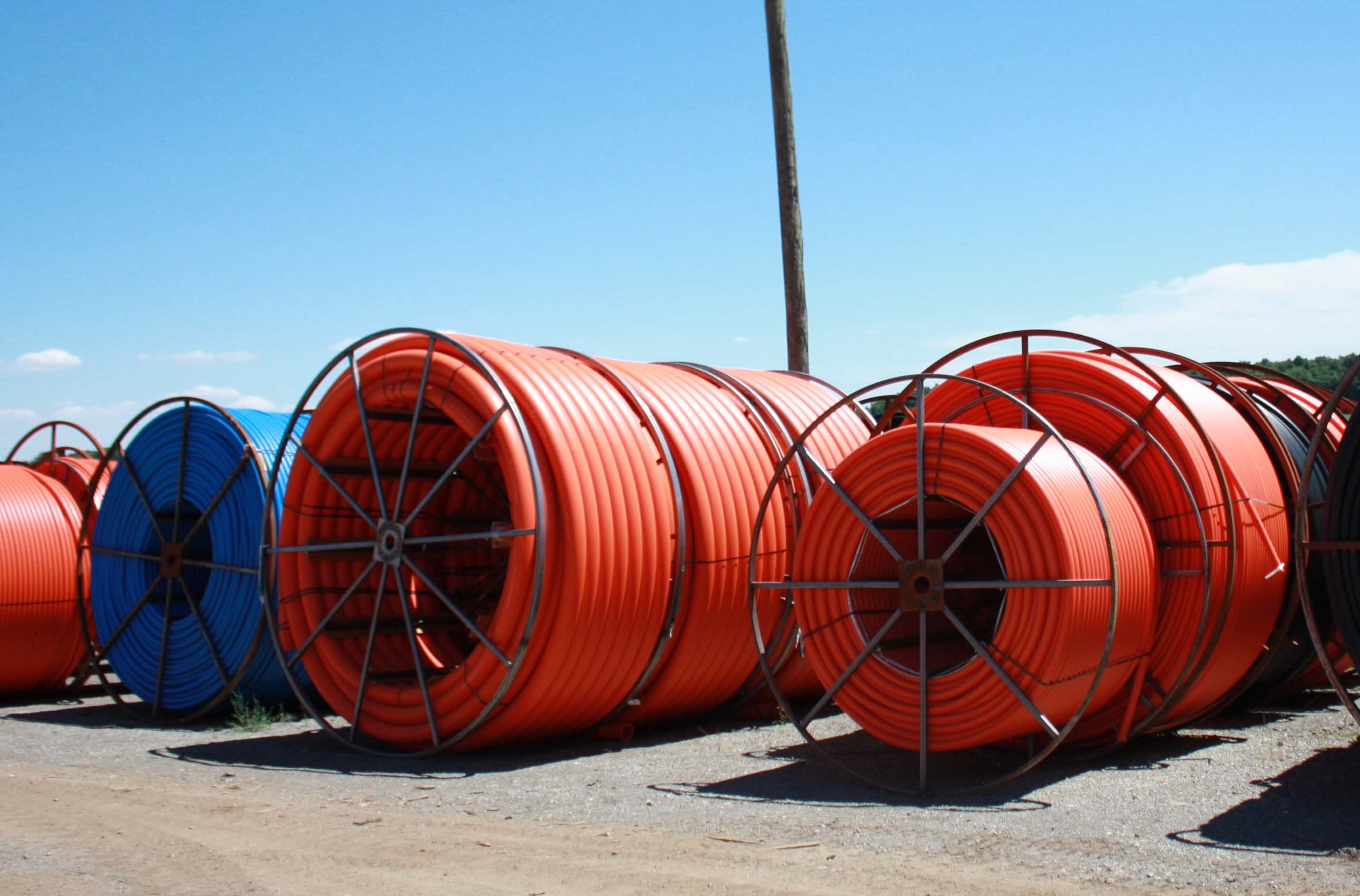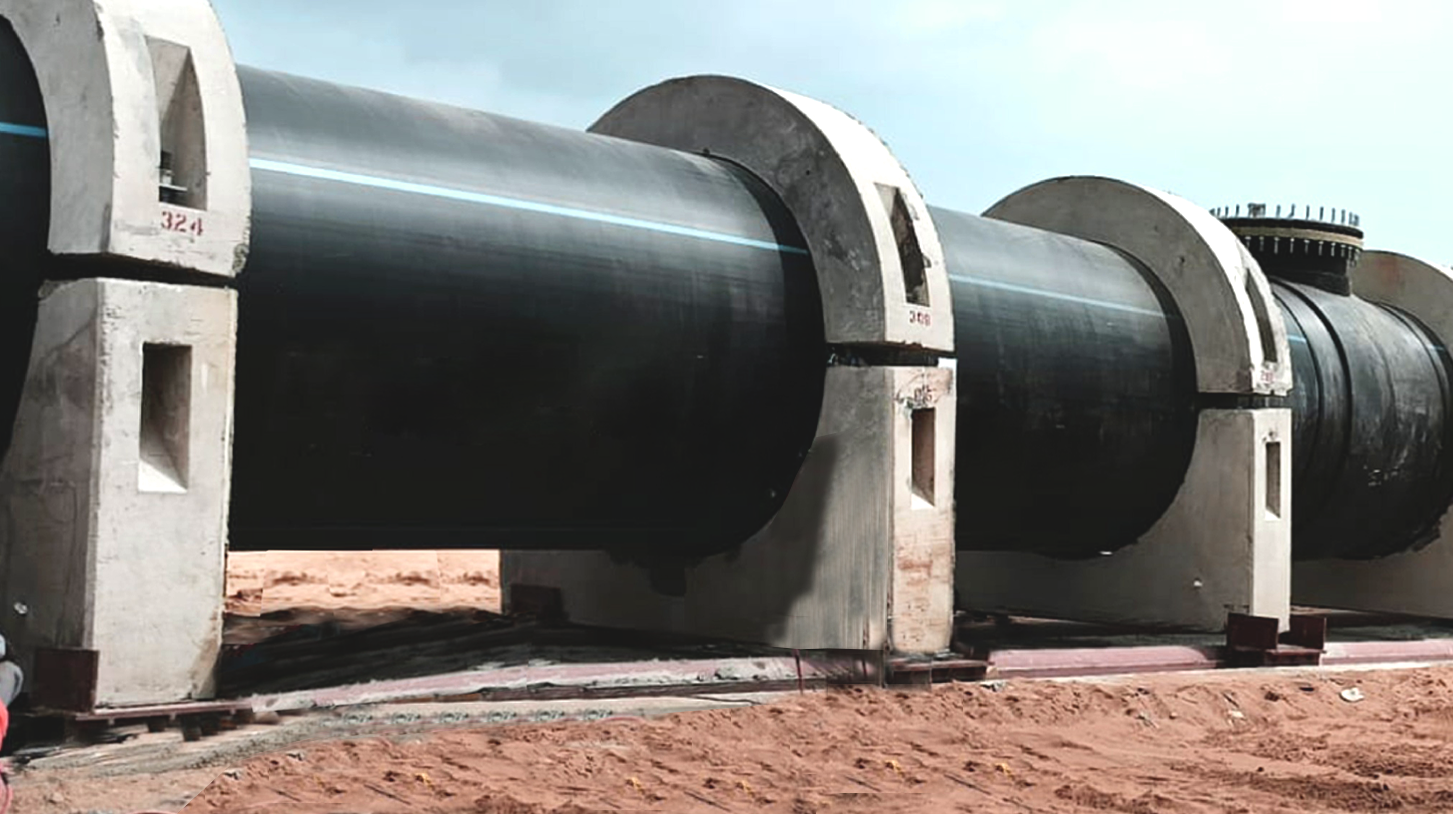Exploring American Plastics HDPE Pipe Manufacturing and Its Impact in Modern Infrastructure
The Essential Actions for Effective Setup of HDPE Pipe in Your Following Project
Effective installment of HDPE pipeline requires mindful preparation and execution. Trick actions include reviewing job demands, preparing the website, and choosing proper signing up with methods. Each phase plays a crucial function in making certain the stability and performance of the pipe. Understanding these essential steps can considerably affect the overall success of the job - American Plastics HDPE Pipe for Oilfield. The subtleties of each action might hold the secret to conquering usual obstacles encountered during installment.
Understanding the Advantages of HDPE Pipe
High-density polyethylene (HDPE) pipe offers countless advantages that make it a recommended choice for different applications. Its high resistance to deterioration and chemicals guarantees longevity popular atmospheres, significantly prolonging the life-span of installations. Furthermore, HDPE's adaptability permits less complicated installation, particularly in tough surfaces, as it can flex without damaging. The light-weight nature of HDPE pipeline streamlines transportation and handling, lowering labor costs during installment.
Furthermore, HDPE pipe is understood for its reduced rubbing coefficient, which improves fluid flow and decreases power intake. Its seamless building and construction lowers the threat of leakages, adding to much better source administration and environmental management. On top of that, HDPE is recyclable, aligning with lasting techniques and decreasing ecological effect. On the whole, the combination of strength, versatility, and eco-friendliness makes HDPE pipeline a remarkable choice for a large range of jobs, from water circulation to industrial applications.
Planning Your HDPE Pipeline Setup
When intending an installation of HDPE pipe, cautious factor to consider of numerous vital elements is crucial to safeguard an effective task. Project supervisors should assess the details demands of the pipeline, including the intended use, flow prices, and environmental conditions. Recognizing these parameters will certainly assist the choice of suitable pipeline measurements and product grade.
Next off, timelines ought to be developed, factoring in purchase schedules and any kind of potential hold-ups. Control with local authorities for licenses and regulative conformity is also essential. Furthermore, a detailed budget should be prepared, incorporating all prices connected with materials, labor, and equipment.
Finally, it is crucial to engage a certified group experienced in HDPE pipeline setup. Their competence will certainly help reduce dangers, warranty adherence to industry criteria, and ultimately add to the project's success. Detailed preparation lays the groundwork for a smooth installment procedure and long-lasting efficiency of the HDPE piping system.
Preparing the Website for Installation
Appropriate site preparation is necessary for the successful installation of HDPE pipe. Before installation begins, the website needs to be thoroughly examined to ensure it satisfies all needed needs. This includes evaluating the ground for existing frameworks, energies, and prospective dangers that can hamper the setup process.

Appropriate altitude and placement should be established to preserve a consistent gradient for drain objectives. Correct drainage around the installation site is additionally necessary to avoid water build-up, which can cause difficulties down the line.
Techniques for Signing Up With HDPE Pipings
Attaining a dependable connection in between HDPE pipelines is essential for ensuring the honesty and long life of the installation. Numerous techniques exist for signing up with these pipes, each matched for various task demands. Combination welding is just one of one of the most usual approaches, making use of warm to bond the pipe ends together, creating a seamless and durable link. This strategy can be more categorized right into outlet blend and butt blend, relying on the pipe setups.
Mechanical fittings are one more choice, employing clamps and threaded ports to join areas of HDPE pipe. While typically faster to mount, they may require additional upkeep with time. Electrofusion is a specific method that involves making use of electrical present to heat and fuse the pipes through specifically made installations, guaranteeing a solid bond. Choosing the suitable signing up with method is important, as it straight influences the general performance and dependability of the HDPE piping system in the designated application.
Testing and Examination of Installed Water Lines
The screening and examination of installed HDPE pipes are essential to ensuring their capability and long life. This procedure encompasses aesthetic evaluation strategies, stress screening methods, and leakage detection treatments to recognize possible concerns. By using these methods, experts can verify the integrity of the setup before it is taken into usage.
Aesthetic Evaluation Techniques
Utilizing effective visual assessment strategies is vital for ensuring the integrity of installed HDPE pipelines. Inspectors need to methodically take a look at all visible areas of the pipe to identify any kind of indications of damages, misalignment, or incorrect setup. Secret signs to assess consist of joint honesty, surface area abnormalities, and connections. Examiners might utilize tools such as magnifying glasses or electronic cameras to enhance presence and detail. It is necessary to inspect for indicators of environmental tension, such as twisting or extreme flexing, which could compromise efficiency. Constant paperwork of searchings for permits tracking changes in time and aids overview essential fixings. By adhering to well established aesthetic assessment procedures, task teams can notably lower the risk of future failures and guarantee long-lasting integrity of the piping system.
Stress Evaluating Techniques
Visual evaluation acts as a preliminary procedure, yet it is not enough by itself to ensure the efficiency of mounted HDPE pipes. Pressure screening techniques are crucial for guaranteeing the integrity of these systems. Typically, hydrostatic testing is utilized, where the pipelines are loaded with water and based on pressure degrees over the desired operating pressure. This method helps determine weak points or potential leaks. Pneumatically-driven testing can likewise be made use of, although it carries greater dangers as a result of the compressibility of air. No matter the method selected, sticking to market standards and safety and security procedures is vital. After conducting stress examinations, comprehensive documentation is essential to validate the outcomes and verify that the installment satisfies all operational requirements before proceeding to the next phase of the task.

Drip Discovery Procedures
Just how can one ensure that mounted HDPE pipelines are devoid of leaks? Efficient leak detection procedures are crucial to safeguard the integrity of the system. Originally, aesthetic assessments need to be done, looking for signs of water build-up or dirt disintegration around pipeline great site joints. Following this, pressure screening can confirm the system's strength. A typical approach is the hydrostatic test, where water is introduced under pressure, keeping an eye on for declines that suggest possible leakages. Furthermore, advanced technologies, such as acoustic sensors or infrared thermography, can find leaks that may not show up. Regular surveillance and upkeep further add to the long life of HDPE pipelines, guaranteeing they stay leak-free throughout their functional life-span. Appropriate documentation of these procedures is necessary for compliance and future recommendation.
Maintenance Tips for Long-Term Efficiency
To guarantee the long life of HDPE pipelines, establishing a regular evaluation routine is necessary. This proactive approach permits the very early discovery of possible concerns, decreasing expensive repair work. Additionally, implementing correct cleansing techniques will certainly assist maintain peak efficiency and avoid buildup that can influence performance.
Routine Assessment Schedule
HDPE pipes are understood for their longevity and resistance to rust, establishing a routine inspection timetable is important for ensuring their long-lasting efficiency. Regular examinations aid determine possible problems such as leakages, joint honesty, and environmental impacts that might affect the pipe's capability. It is recommended explanation that assessments happen a minimum of biannually, or more frequently in atmospheres with severe conditions. Pipe Supplier American Plastics Midland. During these analyses, visual checks ought to be conducted to spot signs of wear or damage. Furthermore, making use of modern technology such as ultrasonic testing can supply additional insights right into the pipeline's condition. By carrying out a structured evaluation schedule, project managers can proactively address troubles, therefore expanding the life-span of HDPE pipelines and preserving system performance
Correct Cleansing Techniques
Correct cleansing methods play an essential duty in maintaining the long-term performance of HDPE pipelines. Normal cleansing stops the accumulation of particles, debris, and biofilm, which can result in blockages and minimized flow performance. Operators must employ approaches such as high-pressure water jetting or foam cleaning to effectively eliminate impurities without damaging the pipe surface. It is vital to stay clear of utilizing severe chemicals that might break down HDPE product. Furthermore, arranged maintenance checks need to consist of aesthetic examinations for any signs of wear or hose pipe connector damages. Effectively educated personnel should execute these cleaning procedures, guaranteeing compliance with safety and security and ecological regulations. By applying these methods, the life expectancy of HDPE pipes can be significantly expanded, making sure suitable performance throughout their functional life.
Frequently Asked Inquiries
What Are the Ecological Impacts of HDPE Pipeline Production?
The ecological impacts of HDPE pipeline production consist of greenhouse gas emissions, power consumption throughout manufacturing, prospective plastic air pollution, and obstacles in reusing. Nonetheless, HDPE's durability and resistance to corrosion can reduce some environmental concerns.
Exactly How Does HDPE Pipe Compare to Other Materials?

What Equipment Are Essential for HDPE Pipeline Installation?
Vital devices for HDPE pipeline setup include a fusion maker, pipeline cutters, shovels, gauging tape, and safety and security equipment. Correct tools guarantees effective, risk-free handling and installation, adding to the task's total success and stability.
Exist Any Certain Regulations for HDPE Pipeline Setup?
Specific guidelines for HDPE pipe installation differ by region, often controlled by local, state, or government codes. Conformity with these policies warranties safety, ecological security, and capability, making adherence essential for successful project outcomes.
Can HDPE Pipes Be Recycled After Use?
Yes, HDPE pipes can be recycled after use. Their polycarbonate nature enables reprocessing, making them ideal for reusing right into brand-new items. This sustainability aspect contributes to ecological preservation and promotes circular economic climate techniques in building and construction.